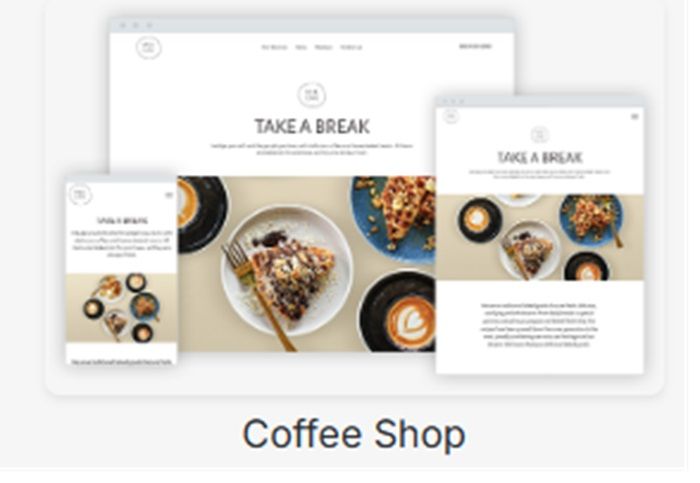Local SEO Action Plan: Ranking Your New Website on Google (Organic SEO)
Ranking Your New Website on Google (Organic SEO)

Local SEO Action Plan: Ranking Your New Website on Google (Organic SEO)
Scenario:
You’ve launched a new website for your local service business (U.S. based) and have Google Search Console set up. Now, you need an actionable, step-by-step plan to improve your Google rankings organically. Below is a structured plan focused on local SEO best practices, on-page and technical optimization, local content creation, leveraging Google Search Console, and building local backlinks/citations. Each step is prioritized for maximum impact and includes practical tips, tools, and examples.
Step 1: Claim & Optimize Your Google Business Profile (GBP) 🚩
Example: Google’s “Map Pack” shows three local business listings (with reviews, address, etc.) for a query like “barber Boston,” illustrating the importance of an optimized Google Business Profile.
Why: Your Google Business Profile is the cornerstone of local SEO – it directly influences whether you appear in Google’s “map pack” (the top 3 local results) and Google Maps
backlinko.com
backlinko.com
. An optimized GBP improves relevance (matching what people search), distance (confirming your location), and prominence (your reputation), which are key local ranking factors
support.google.com
support.google.com
.
Actions:
Claim or create your GBP: If you haven’t already, claim your business on Google Business Profile and complete all details accurately
backlinko.com
support.google.com
. Use your real business name (no keyword stuffing in the name, which could lead to suspension
squarespace.com
). Verify your listing with Google to make it official
support.google.com
.
Provide Complete NAP Info: Ensure your Name, Address, Phone (NAP) on GBP exactly matches what’s on your website and other listings
backlinko.com
. Inconsistencies can confuse Google and hurt rankings
bruceclay.com
. Include your business address (or service area), phone number, and category – for example, “Plumber” or “Pest Control Service”. Add attributes like hours, website URL, and any special services (e.g. “24/7 emergency service”).
Choose Categories Wisely: Select the most relevant primary category for your business, then add secondary categories if applicable
backlinko.com
backlinko.com
. For instance, a landscaping business might choose “Landscape Designer” as primary and “Lawn Care Service” as a secondary. Categories help expand the keywords your profile can rank for.
Write a Keyword-Optimized Description: Add a clear description of your business – who you are, what you offer, and where. Include local keywords naturally (e.g. “family-owned HVAC company serving Atlanta neighborhoods”) to signal relevance
backlinko.com
. Avoid keyword stuffing – keep it readable and genuine.
Upload Quality Photos & Media: Add high-quality photos of your business location, team, products, or services. Visuals make your listing more attractive and credible to customers
backlinko.com
. For example, a roofing company might post before-and-after photos of projects. Update these periodically to show you’re active.
Encourage and Manage Reviews: Begin asking happy customers to leave Google reviews. Reviews build trust and influence local rankings – Google uses review count, quality, and recency as ranking signals
backlinko.com
support.google.com
. Aim to steadily gather positive reviews (e.g. via follow-up emails or a QR code on invoices linking to your review page
squarespace.com
). Tip: Provide a direct link to your Google review form to make it easy
backlinko.com
. Respond to every review, good or bad – it shows engagement and Google views owner responses positively for local SEO
backlinko.com
backlinko.com
. Always reply professionally and promptly, thanking users for good reviews and addressing any issues raised in negative ones.
Keep Info Updated: Treat your GBP as a living profile. Update holiday hours, add new services or posts (announcements, offers, or events) regularly
squarespace.com
squarespace.com
. An active, up-to-date profile signals to Google (and customers) that your business is legitimate and responsive.
Tools & Tips: Use the Google Business Profile dashboard to check insights – see how many views and actions (calls, direction requests) your listing gets. This can guide you on what’s working. Also consider setting up Bing Places (Microsoft’s equivalent) by importing your GBP data, and ensure you’re listed on Apple Maps – covering these helps you reach more local users (and indirectly benefits SEO through consistency).
Step 2: On-Page & Technical SEO – Optimize Your Website 🔧
Why:
Your website must be technically sound, and on-page optimized so that search engines can crawl it and understand its local relevance. Strong on-page SEO (titles, content, structure) + solid technical health (mobile-friendly, fast loading, proper indexing) = higher chances of ranking in organic results just below the map pack (backlinko.com). This also supports your GBP – Google often cross-checks your site for details like Name, Address, Phone, and services.
Actions:
Use Local Keywords in Key Places:
Incorporate location-specific keywords into your pages’ meta tags and content. For example, use “[Service] in [City]” in your <title> tags, H1 headings, and naturally in your text
(backlinko.com)
bruceclay.com. E.g.: a dentist might target “cosmetic dentist Chicago” or an HVAC company “emergency plumber Austin” (backlinko.com). Include the city/neighborhood name on your homepage and important service pages to signal local focus. Ensure each page’s title and meta description are unique and descriptive (this can also improve click-throughs from Google).
Create Location-Specific Pages (if needed):
If you serve multiple cities or offer distinct services, consider dedicated landing pages for each location or service (backlinko.com) squarespace.com. For instance, a home contractor serving two counties can have separate pages like “Roofing Services – County A” and “Roofing Services – County B”. Important: each page should have unique, valuable content – don’t just copy-paste only changing the city name (backlinko.com). Describe what you offer in that area, include testimonials from local customers if possible, and add area-specific details (landmarks, community info) so the page feels truly localized.
Optimize Site Structure & URLs:
Make sure your site’s navigation is clear and crawlable. Organize pages hierarchically (e.g., Services > Plumbing > Drain Cleaning). Use short, descriptive URLs that include keywords (e.g. /drain-cleaning-atlanta/). Link between relevant pages on your site (internal linking) to help Google discover content and understand your site’s theme. Also create and submit an XML sitemap via Search Console to ensure all pages are indexed.
Improve Page Speed & Mobile Experience:
Technical optimization is crucial. Most local searches happen on mobile, and Google uses mobile-first indexing (bruceclay.com). Ensure your site is mobile-friendly – it should load quickly and display properly on phones/tablets (bruceclay.com). Use Google’s Page Speed Insights tool to identify speed issues and fix them (compress images, enable browser caching, minimize code, etc.). Simple, clean design with easy-to-click buttons and readable text on mobile will improve user experience (bruceclay.com). This not only helps SEO but also keeps visitors from bouncing.
Implement Local Schema Markup:
Add structured data (Schema.org markup) to your site, specifically the Local Business schema relevant to your industry (backlinko.com).
This code (in JSON-LD format in your page <head>) provides search engines explicit info about your business – name, address, phone, business hours, geo-coordinates, services, etc.
backlinko.com (bruceclay.com). For example, a restaurant can use the Restaurant schema type, a law firm can use Legal Service. By implementing schema markup, you increase chances of appearing in rich results and Google’s new AI-generated answers with accurate details (backlinko.com). Tip: Use Google’s Rich Results Test tool to validate your schema (backlinko.com).
Embed Google Map & Contact Info:
On your Contact Us page (or footer), embed a Google Map pinpointing your business location (backlinko.com). Also display your NAP info in text (matching your GBP). This reinforces your location signal on the site itself. Embedding a map is easy: go to Google Maps, find your business, click “Share” > “Embed Map” and copy the HTML code (backlinko.com). A visible map and address on your site not only help users but also confirm to Google that your website is aligned with your GBP data.
Technical Health Check:
In Google Search Console, review the Index Coverage report for errors (like pages not indexed or broken links) and fix any that appear. Ensure your site has no duplicate content or broken pages (you can use free tools like Screaming Frog or Sitebulb for a quick audit). Also, implement HTTPS (if not already) for security – Google favors secure sites.
Tools & Tips:
– Mobile-Friendly Test:
Use Google’s Mobile-Friendly Test to see if your pages have mobile usability issues.
– SEO Plugins:
If you use a CMS (like WordPress), SEO plugins such as Yoast or Rank Math can guide you in optimizing titles, meta descriptions, and schema.
– Site Speed:
Google Page Speed Insights or GTmetrix can give specific recommendations to speed up your site. Even simple fixes like compressing images or using a faster web host can make a big difference.
– Schema Generators:
Try a tool like Schema Markup Generator (many are free online) to create Local Business JSON-LD code by filling in your details.
Step 3: Create Localized Content that Serves Your Audience 📝
Why: Content is how you target the specific questions and needs of local searchers. High-quality, locally-focused content improves your relevance for local queries and showcases your expertise (which contributes to Google’s E-E-A-T: Experience, Expertise, Authority, Trust). Regular content creation – whether through a blog, FAQs, or project galleries – also keeps your site fresh, which search engines and users love
squarespace.com
bruceclay.com
.
Actions:
Conduct Local Keyword Research: Use tools like Google Keyword Planner, Moz, or Semrush to find search terms that include your location or phrases like “near me.” Brainstorm common questions people in your area ask about your service (“How much does [service] cost in [town]?” or “[service] near [City]”). Google’s own “People Also Ask” and Autocomplete suggestions can inspire content topics. For example, if you see people search “water heater maintenance [City]”, consider an article or guide on that topic.
Start a Local Blog or Resource Section: Commit to publishing useful articles or updates at least 1-2 times per month. Focus on local angles. For instance: a roofing company could post “5 Common Roofing Issues in [City]’s Climate” or a catering business might write about “Planning the Perfect BBQ – [City] Event Guide.” These kinds of posts target long-tail keywords (which often include a location) and demonstrate you understand local needs (bruceclay.com).
Also share behind-the-scenes stories or community involvement – content that resonates with local readers can earn engagement and even local press attention (squarespace.com).
Answer Local FAQs:
Compile a list of frequently asked questions from your customers, especially those specific to your region. Create an FAQ page or individual blog posts answering these. Tip: Check Google Search Console’s Performance report to see queries people use to find you – you might discover question-style queries or nearby town names that you haven’t explicitly covered on the site. If, say, many users search “do I need a permit for tree removal in [City]?”, that’s a perfect FAQ to answer in a post. This not only targets relevant keywords but also provides value to your audience. (Indeed, using GSC data can reveal what topics users want to know more about, which you can then turn into content (brightlocal.com.)
Create Service Area or Case Study Pages:
If applicable, add pages that highlight work you’ve done in specific locations. For example, a home painter might have case studies like “House Painting Project in [Neighborhood]” with photos and a testimonial from that local client. This kind of content naturally includes local context and keywords (neighborhood names, etc.), boosting your long-tail visibility. It also doubles as social proof for prospective customers in those areas.
Keep Content Human and Helpful:
Whether it’s a blog post or a service page, write in a conversational tone focused on helping the reader. Google’s algorithms (including the Helpful Content Update) reward content that satisfies the user’s intent. So rather than just pushing your services, also provide tips, how-tos, and local insights. For example, a bakery’s blog could share seasonal recipes or cover local food events – content that engages the community. High engagement (reads, shares, time on page) sends positive signals that can indirectly aid rankings (squarespace.com).
Leverage Google Search Console & Analytics:
After publishing content, monitor how it performs. GSC’s Queries report can show which keywords each page is getting impressions/clicks for. If you notice, for instance, that your “HVAC tips” blog post is getting impressions for “winter HVAC maintenance [Your City]” but not clicks, you might tweak the title to better address that (e.g., “Winter HVAC Maintenance in [Your City]: 5 Essential Tips”). Adjusting content based on real search data is a powerful way to climb in rankings
seo.com
.
Tools & Tips:
– Content Calendar:
Use a simple spreadsheet or calendar tool to plan your local content topics each month/quarter. Consistency is key.
– Google Trends:
Check Google Trends for your region to see if any local seasonal terms or trending topics could spark content ideas.
– FAQ Schema:
For your FAQ page, you can implement FAQ schema markup so that Q&A pairs might be eligible to show up directly in Google results (enhancing visibility).
– Local Content Inspiration:
Look at local forums (Nextdoor, Facebook groups) or listen to customer inquiries to get a sense of what local folks care about. If multiple people ask, “What’s the best time of year to trim trees in our area?”, that’s content gold.
– Engage the Community:
Share your content on your social media or community boards. While this isn’t a direct SEO ranking factor, it can attract local visitors (traffic) and sometimes earn natural backlinks if local bloggers or news sites find your content useful.
Step 4: Leverage Google Search Console for Insights & Improvements 📈
Why: Google Search Console (GSC) is your best friend for organic SEO feedback. It shows how Google views your site and provides data on search performance – which queries you rank for, which pages get clicks, and any site issues. By regularly reviewing GSC, you can make data-driven improvements: optimizing pages with low click-through rates, fixing coverage errors, and spotting opportunities to better target local searches seo.com.
.
Actions:
Monitor Search Performance:
In GSC’s Performance report (Search Results), filter the data to focus on your target locale. While GSC doesn’t give a city filter in the standard interface, you can glean local insight by looking at queries that include your city or by using the Country filter (ensure it’s mainly the U.S., as expected). Check the Queries tab for terms people use – are you seeing your city name or “near me” searches? Identify your top pages and queries. For example, if your “Plumbing Services” page is getting impressions for “water heater repair [City]” but has a low click-through rate (CTR), you might improve the title/meta description to mention “Expert Water Heater Repair in [City]” to attract more clicks. GSC essentially shows “for what queries and how often you’re appearing in search results,” which you can use to see where you’re winning or losing, and adjust accordingly seo.com
Identify and Fix Indexing Issues:
Regularly check Coverage (or Pages in the new GSC interface) for any errors or warnings. If some pages aren’t indexed or are excluded, investigate why (it could be a crawl issue, a no index tag, or thin content). Fixing these ensures your entire site (or at least all-important pages) can actually appear on Google. If you’ve created new pages (like those location/service pages), use URL Inspection to submit them for indexing so they get picked up faster.
Analyze Core Web Vitals & Page Experience:
GSC provides Page Experience and Core Web Vitals reports – these show if your site meets performance and usability thresholds (for mobile and desktop). If GSC flags “Needs Improvement” or “Poor” for things like LCP (Largest Content full Paint) or CLS (Cumulative Layout Shift), address them (often this overlaps with the speed/mobile tips from Step 2). Improving Core Web Vitals can boost your SEO slightly and definitely helps user satisfaction.
Review the Links Report: In GSC’s Links report, you can see which websites link to yours (External links) and your top linked pages. This is useful to gauge if your off-page efforts are working (e.g., if you got listed on a local chamber of commerce site, it should show up here). It’s also a basic check for any spammy links – while Google usually handles those, a sudden influx might be something to disavow (rarely needed for local small sites, but worth knowing).
Use GSC for Content Ideas:
As mentioned, GSC query data can spark new content (if you discover queries, you hadn’t explicitly targeted). It can also reveal user intent. For example, a lot of impressions for “[Service] cost [City]” might prompt you to create a pricing guide. GSC even allows regex filters for advanced users to find patterns (like any query containing “near me” or your city name)
brightlocal.com
. This can illuminate how searchers are phrasing their local queries.
Take Advantage of GSC Insights:
Google also offers Search Console Insights (which integrates GSC and Google Analytics data) to highlight your best-performing content and how people discover it. Check this for a quick snapshot of what’s resonating with your audience. For instance, it might show that a blog post you wrote is unusually popular via search – telling you to maybe expand on that topic or update it frequently.
Set Up Email Alerts: In GSC settings, ensure you have your email notifications on. Google will email you if it detects significant issues (like a spike in 404 errors, a sudden drop in indexed pages, or a manual penalty). Early warning = quicker fix.
Tools & Tips:
– GSC Looker Studio Dashboard:
If you want easier visualization, connect GSC to Google Looker Studio (Data Studio) using templates (like the Bright Local Looker Studio report
brightlocal.com). This can break down queries by page or other dimensions, helpful for multi-location analysis.
– CTR Optimization:
Sort your GSC Performance report by highest impressions to see which queries/page combos have low CTR. Tweaking title tags or meta descriptions to be more compelling or include the query can often lift your CTR (and thus traffic) seo.com
. For example, a title “10 Tips for Choosing a Lawyer” could become “10 Tips for Choosing a Lawyer in [Your City]” if most impressions are local – more relevant = more clicks.
– Coverage Details:
For any URL errors, GSC provides details. Use the URL Inspection tool – it will tell you if a page is Crawled but not Indexed (often content quality or duplication issue) or blocked by robots.txt, etc. Address each accordingly (sometimes it’s as simple as removing a no index tag or updating your robots.txt).
– Track Metrics Over Time:
Keep an eye on total clicks and impressions from your local area. As you implement this plan, you should see upward trends. GSC lets you compare date ranges to ensure you’re moving in the right direction.
Step 5: Build Local Backlinks and Citations 🔗
Why:
Off-page SEO is especially important for local rankings. Google’s “prominence” factor in local search is boosted by mentions of your business around the web, including backlinks from other sites and consistent directory listings support.google.com, bruceclay.com. Building local backlinks and citations will improve your site’s authority and trust. Think of each link or citation as a vote of confidence and a signal that your business is part of the local community.
Actions:
Submit to Key Directories (Citations):
Start with the big ones: create or update your listings on Yelp, Yellow Pages, Facebook, Apple Maps, Bing Places, Angi (if a home service), and any industry-specific directories (e.g. HomeAdvisor, Avvo for lawyers, Healthgrades for doctors, etc.). Ensure your NAP details are identical everywhere
bruceclay.com. Consistency prevents confusion – Google won’t accidentally think different phone numbers or name variations are separate businesses. These listings themselves might not all provide followed backlinks, but they do boost your local search presence and sometimes appear on the first page for your name. Many are also data providers that feed info to smaller sites. A tool like Moz Local or SEMrush Listing Management can help automate checking a lot of these citations
backlinko.com
backlinko.com, but you can also do it manually for key sites to save cost.
Get Listed on Local & Niche Sites:
Beyond the major directories, pursue listings on local business indexes. Examples include your city’s Chamber of Commerce, local business association pages, or community directories. These often provide a backlink and a citation. Also consider niche platforms – e.g., wedding professionals should list on WeddingWire/The Knot, restaurants on TripAdvisor or OpenTable, etc. Google’s AI-driven results also pull from these trusted third-party sites
backlinko.com
, so having up-to-date info there can increase your chances of showing up in new search features.
Ensure NAP Consistency:
Conduct an audit of your existing citations. Search your business name and see what comes up – if you find old or incorrect listings (maybe an old address or phone from a previous location), try to update them. Inconsistent NAP info can hurt your credibility
backlinko.com
backlinko.com
. Use a free tool like Bright Local’s citation checker or manually fix the big ones by claiming those listings. This cleanup is especially important if your business moved or rebranded.
Pursue Local Backlinks (Editorial):
Not all links are equal – a mention and link from a respected local website can significantly boost your SEO. Brainstorm potential link opportunities in your community:
Partner & Supplier Links:
Make a list of businesses you work with (suppliers, vendors, partners). Do they have a “Partners” or “Resources” page? Ask if they can add your link
backlinko.com
backlinko.com. For example, a bakery sourcing from a local flour mill might get a link from the mill’s site.
Local News & Press:
Local newspapers, magazines, or TV stations often cover human-interest or business stories. If you have something newsworthy (grand opening, a community service event, an award, launching a new service), send out a press release or personally pitch the story to local journalists
bruceclay.com. A mention in a news article with a backlink is gold – it brings referral traffic and signals Google that you’re prominent in the area bruceclay.com. (Pro tip: when issuing press releases, include your website link and make sure the content is genuinely newsworthy to increase pickup).
Community Involvement: Sponsor local events, charities, or youth sports teams. Often the event page or sponsor page will link to your website
bruceclay.com
bruceclay.com.
Not only is this great PR, but those .org or .gov (if city-sponsored) links carry weight. For instance, a local festival might list all sponsors with links – being on that list helps your link profile and your brand presence.
Local Blogs & Testimonials:
Identify local bloggers or influencers in your niche. Could you contribute a guest blog post? Write something useful for their audience in exchange for a link in your author bio or within the content
bruceclay.com. Alternatively, write testimonials for other local businesses you love – many will post your quote on their site with a backlink to your site. It’s a win-win: they get a testimonial; you get a link.
Educational or .gov Connections:
If relevant, see if any local schools, colleges, or city websites have resource pages. For example, a city’s official site might have a “Local Businesses Directory” – make sure you’re listed. Or if you can offer student discounts or workshops, you might get a mention on a school’s site. These institutional links can be powerful.
Encourage Reviews on Other Platforms:
While Google reviews on your GBP are priority, don’t neglect others like Yelp, Facebook, or industry-specific review sites. High ratings and reviews on those can indirectly help SEO by improving click-through (people are likelier to click a 5-star business) and sometimes those profiles themselves rank for your name searches. Just remember to never fake reviews – always solicit from real customers ethically.
Tools & Tips:
– Backlink Gap Analysis:
Use a tool like SEMrush’s Backlink Gap or Ahrefs’ Link Intersect. You input competitor websites (especially top local competitors) and find sites that link to them but not you (backlinko.com)
This can reveal local directories or organizations you might have missed. For example, if all your competitors are listed on “LocalBusinessAlliance.com” and you’re not, that’s one to get on.
– Track Your Citations:
Keep a simple spreadsheet of all the directories and sites where you’ve listed your business (with URL and login details if applicable). This helps you manage consistency – and you’ll know where to update if you ever change phone numbers or address.
– Consider Citation Services:
If doing it manually is too tedious, services like Moz Local, Yext, or Bright Local can distribute your info to dozens of directories quickly. There’s a cost, but it saves time. Even after using them, remain vigilant about any duplicates or errors.
– Quality over Quantity:
Focus on relevant, local link opportunities rather than random spammy ones. A few links from local news, community sites, or authoritative directories outweigh hundreds of low-quality links. Google values natural links – so build relationships and create content that earns links. For instance, a well-researched local guide on your site might attract a link from a tourism blog or a local wiki.
– Prominence Signals:
Remember that Google’s local algorithm looks at overall prominence – having numerous positive reviews and being mentioned in local articles, directories, etc., all contribute. According to Google, “More reviews and positive ratings can help your business’s local ranking” and so can “how many websites link to your business” support.google.com. So, the work you put into getting good reviews and local links directly supports better rankings.
Conclusion: Stay Consistent and Track Progress 🎯
Implementing the above steps will set a strong foundation for your local SEO. Prioritize Google Business Profile optimization and on-site fundamentals first; they have the most immediate impact. Then steadily produce local content and build your citation/link footprint as ongoing tasks. Use Google Search Console data to continually refine your strategy – it will show you what’s working.
SEO is an ongoing process, not a one-time project. Set aside a little time each week or month to: update your GBP, add a new blog post or photo, check GSC for any issues, and reach out for one new local link or partnership. Over time, these small actions compound into significant improvements in rankings and traffic. Remember, local SEO isn’t just about appeasing algorithms – it’s about becoming the go-to business in your community online. By following this action plan, you’ll boost your visibility on Google and attract more local customers organically. Good luck, and happy optimizing!
Ready to work with MarketingSiteSEO.com?
Let's connect! We’re here to help.
Send us a message and we’ll be in touch.
Get A Quote Now
More Marketing Tips, Tricks & Tools
Search Engine Optimization ,SEO







